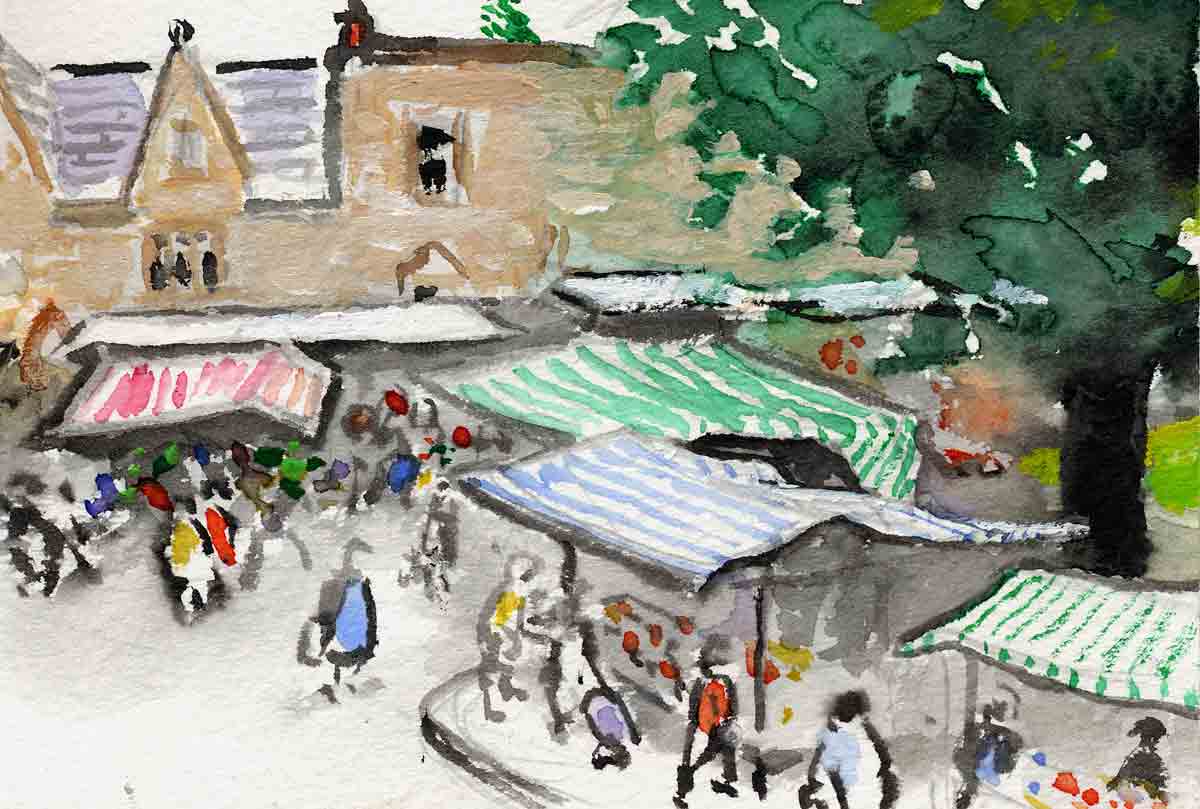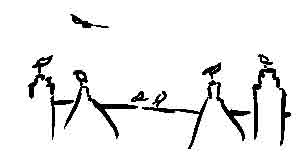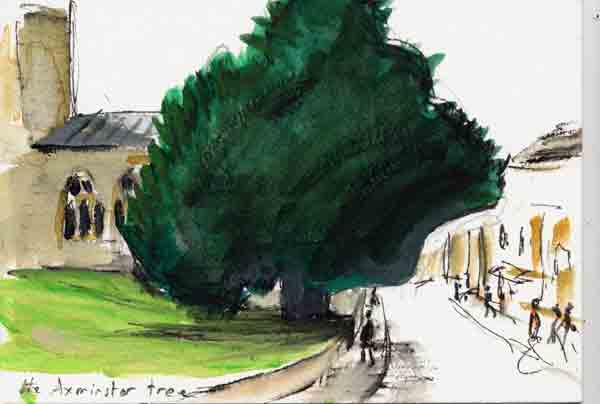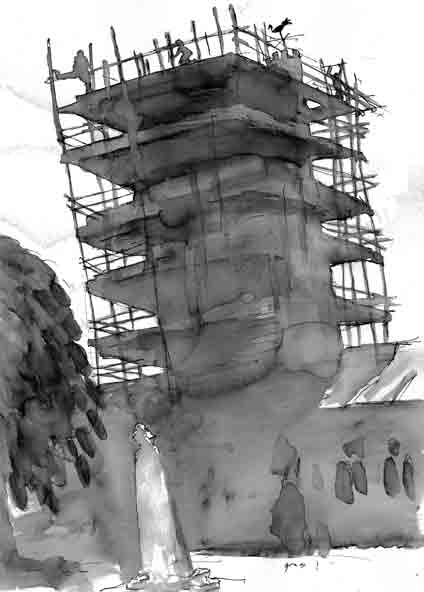The Lyme Maze Game

An atmospheric change, from the crisp air and noise of the market street into the hush of the little department store. Its irregular spaces are as crowded, but with diagonal-standing racks of clothes that muffle sound, and slow-moving customers who impede the passages. Dodge among them to the stairs and find your way back past suitcases and shoes and floor-level tilted mirrors, to the restaurant on the front corner, and grab, if you're lucky, a table by one of the windows, looking down across the street to the market and the green.
(Every pinnacle on the range of stone buildings beyond the market is engulled.)
You might guess that the reason why the town's central space is called Trinity Square (or Trinity Place) is that it's triangular, or that the church is the Church of the Holy Trinity. Neither: the church is dedicated to St. Mary; and the plaza is called Trinity because everything around it had to be rebuilt after a great fire on Trinity Sunday, 1834. The square is nearer to being square if you include the large green, which is at a slightly higher level. It stands beside the pavement at waist height like a table, retained by a stone wall. In summer, young people use Axminster's green like a beach, relaxing in partly shirtless groups—a welcome sight, since the rest of the population is of elevated age. But the young are sometimes accused of disrespect to the war memorial that stands among the trees. Towering paternally over the market is a vast hornbeam (a kind of tree not often allowed to grow like this to its full eighty feet, in fact it is often pollarded or made into hedges). And a yew frames the street going away to the southwest (I hesitate to which of these two to give the title of "the Axminster Tree"). Between the two giants stands a smaller hornbeam.
The scene is walled in at the rear by the church, with its tower silhouetted against the bright sky of the south. Monumental clouds sprout past it, riding the southwestern wind. The age of the tower, like that of the market, is eight centuries. On top is a large weathercock with a golden tail; beneath, eight rods point to the points of the compass, and on them a flock of sparrows likes to perch. They seem to favor W. At other times, rooks seem to play around the tower, tumbling around it and rising again on updrafts; perhaps they have nests up there. The avian scene is completed by a couple of pigeons on the tower's machicolations and, below, a gull on the pinnacle of the war memorial. PICTURE: The minster tower under repair:
But—sorry—when you come downstairs and out of Trinity House, we're not going to offer you another bus. You've lost your return ticket, or the drivers are on strike (they never are). Back to the other options— left or right or back through the market to its rear. |



